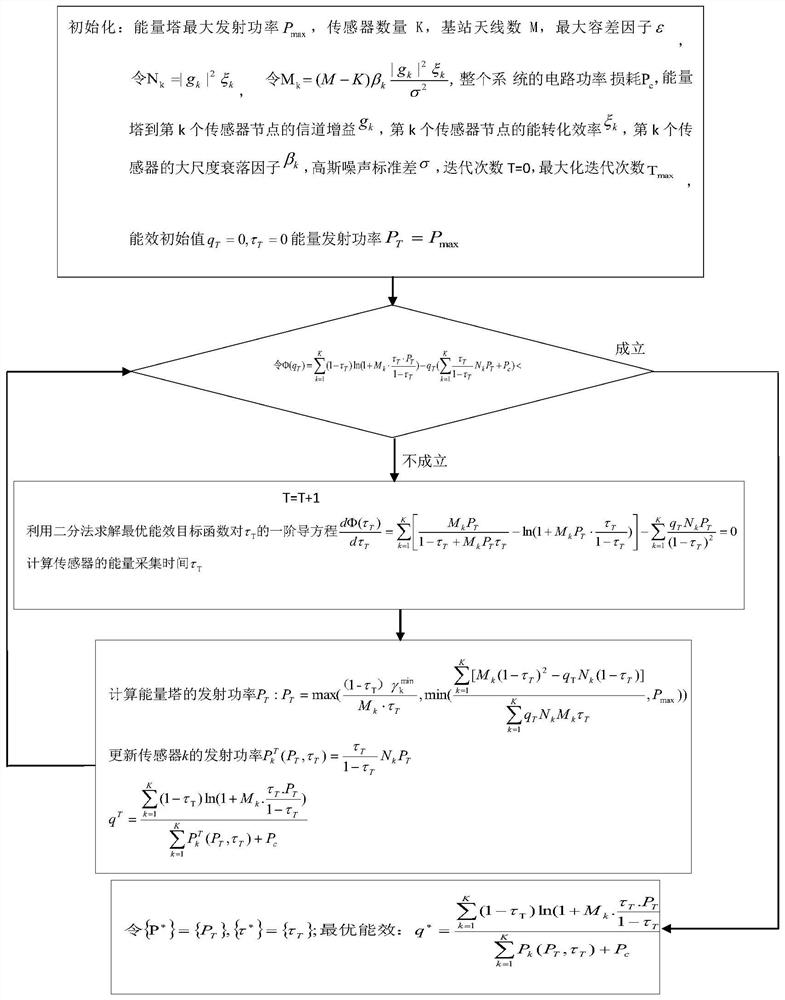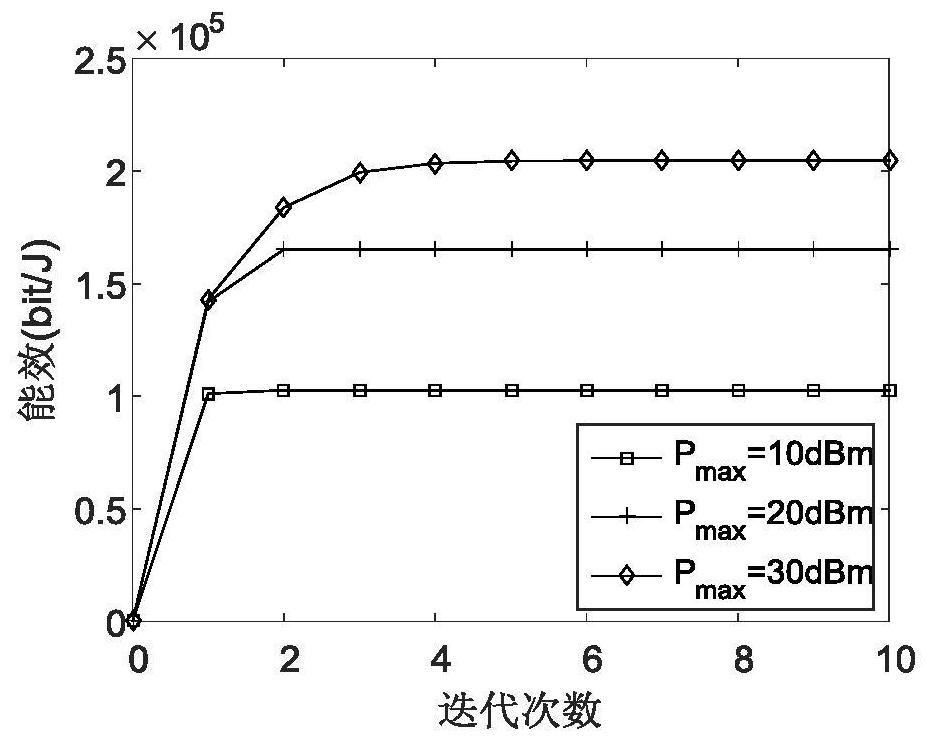A Method for Energy Efficiency Optimization of Large-Scale MIMO System Based on Energy Harvesting
An energy harvesting, large-scale technology, applied in the field of MIMO, can solve the problem of system power consumption without considering circuit power consumption
- Summary
- Abstract
- Description
- Claims
- Application Information
AI Technical Summary
Problems solved by technology
Method used
Image
Examples
Embodiment Construction
[0029] The technical solutions in the embodiments of the present invention will be described clearly and in detail below with reference to the drawings in the embodiments of the present invention. The described embodiments are only some of the embodiments of the invention.
[0030] The technical scheme that the present invention solves the problems of the technologies described above is:
[0031] This embodiment is an energy efficiency optimization scheme for a massive MIMO system for energy harvesting. The base station is equipped with antennas M=100, sensor nodes K=9, and the maximum number of iterations T max =10, the maximum transmission power P of the energy tower max =30dBm, the background noise is Gaussian white noise with zero mean value, and the variance is σ 2 , in the Rayleigh fading channel with M≥K+1, it is assumed that the base station fully knows the channel state information and adopts ZF reception.
[0032] The first step is to initialize the maximum transm...
PUM
 Login to View More
Login to View More Abstract
Description
Claims
Application Information
 Login to View More
Login to View More - R&D
- Intellectual Property
- Life Sciences
- Materials
- Tech Scout
- Unparalleled Data Quality
- Higher Quality Content
- 60% Fewer Hallucinations
Browse by: Latest US Patents, China's latest patents, Technical Efficacy Thesaurus, Application Domain, Technology Topic, Popular Technical Reports.
© 2025 PatSnap. All rights reserved.Legal|Privacy policy|Modern Slavery Act Transparency Statement|Sitemap|About US| Contact US: help@patsnap.com



